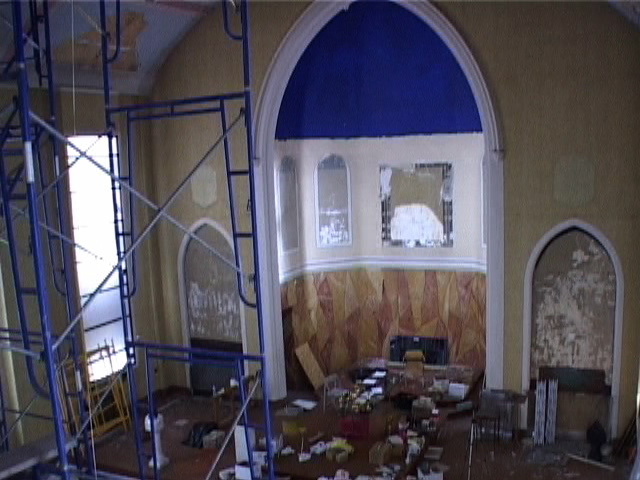In today's edition, Emily Brady briefly updates New York Times readers on the situation of Our Lady of Vilnius. Readers of dotCommonweal won't learn much from the piece, although it does contain one surprise: Joseph Zwilling, director of communications for the Archdiocese of New York explains the decision to paint over the apse fresco. "The churchs fresco was painted over, he added, to protect it from deterioration because it couldnt be removed," Brady writes.
That seems awfully hard to believe. Take, for example, an April 2000 Times story about a huge fresco that was threatened by deterioration.
Both the deteriorating building and the mural are in need of restoration. But Robert A. Peck, commissioner of the public buildings service for the agency, said that preservation advisers had told him that the mural would not pass the historical review required in order to have it restored.
So officials plan to restore the building and destroy the mural sometime this year, either by removing the plaster or painting over the mural.
And consider an LSU Today article on a project to restore on-campus frescoes:
Grenier said it took one month just to remove the three layers of paint that were put on top of Dietrich's exterior mural. She noted that the mural proved to be "extremely forgiving in its tolerance of the chemicals and manipulation required to remove the heavy layers of over painting, which could even destroy other types of mural paintings."
Maybe there is a special kind of paint that preserves a work of art as delicate as a fresco. And maybe that paint is royal blue. Still, I'm no expert, so I'm going to see what I can find out about the archdiocese's method of fresco preservation. I'll keep you posted.

Please email comments to [email protected] and join the conversation on our Facebook page.
Share
Previous Story
Genuflecting to the Left
Next Story
The Blue Comet

